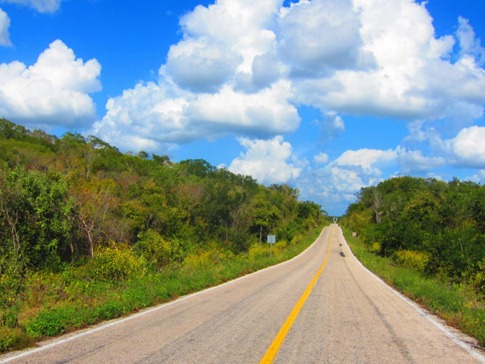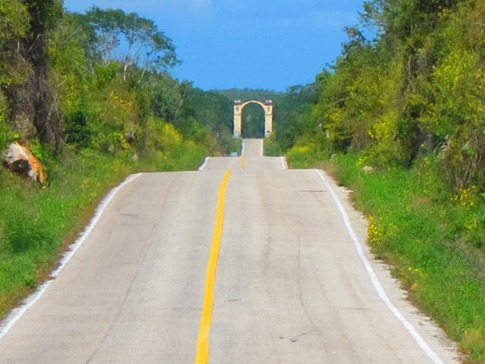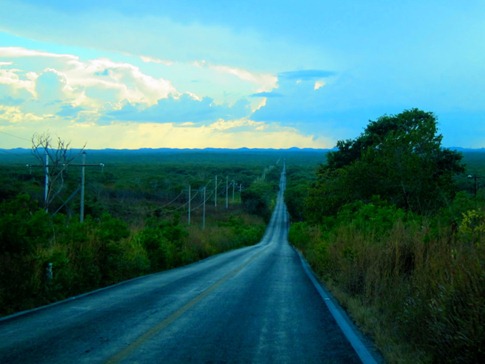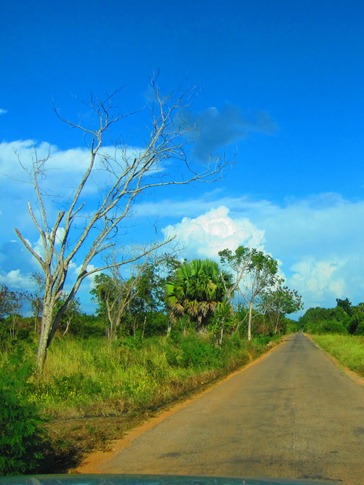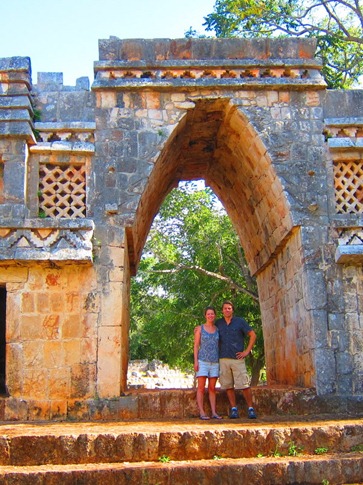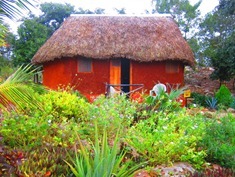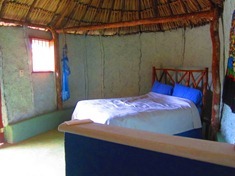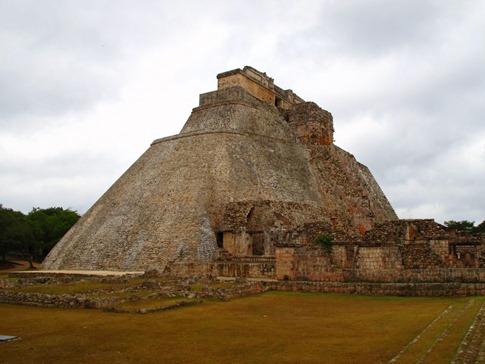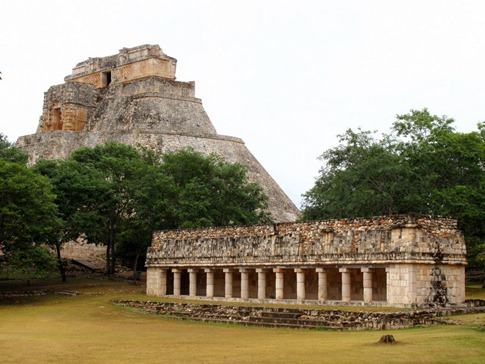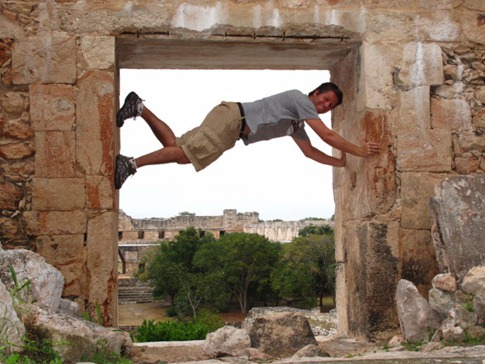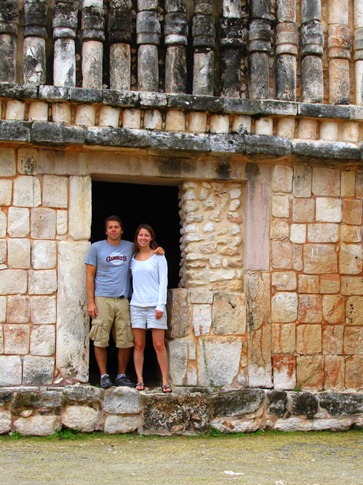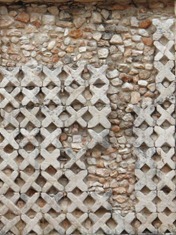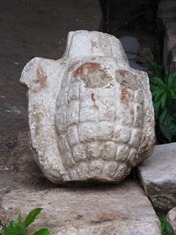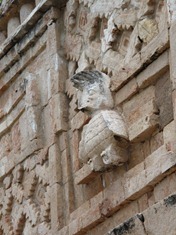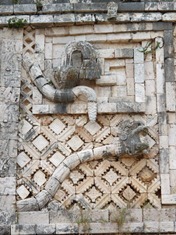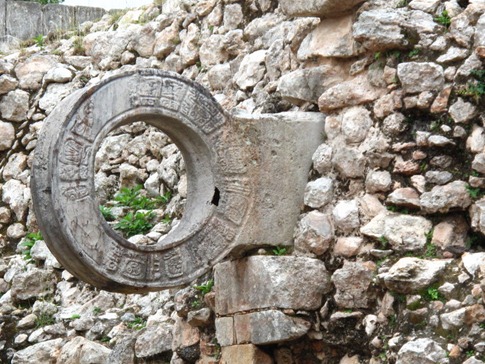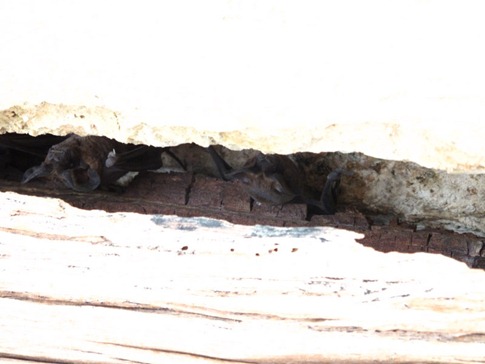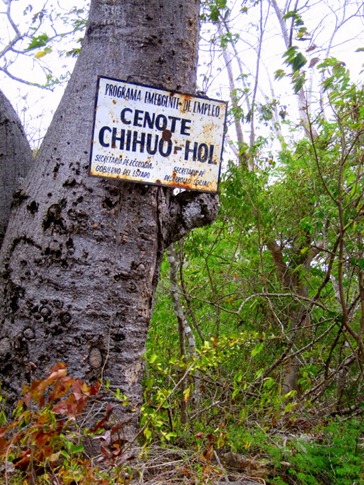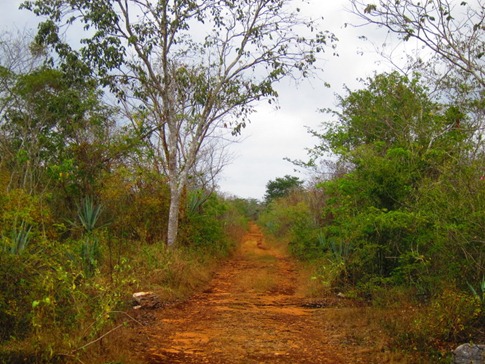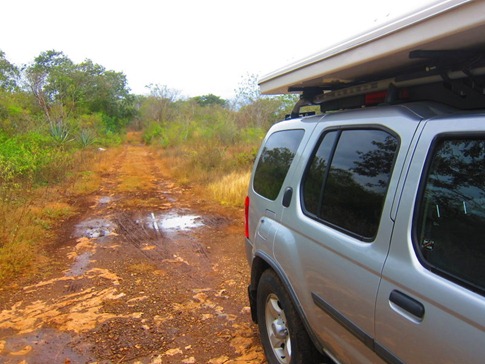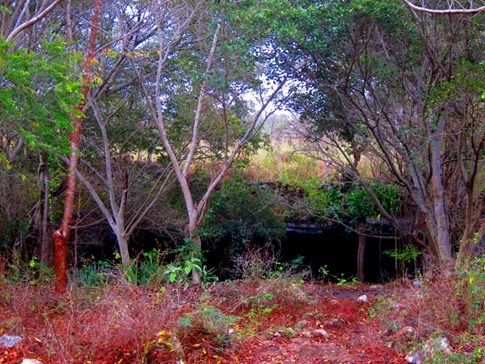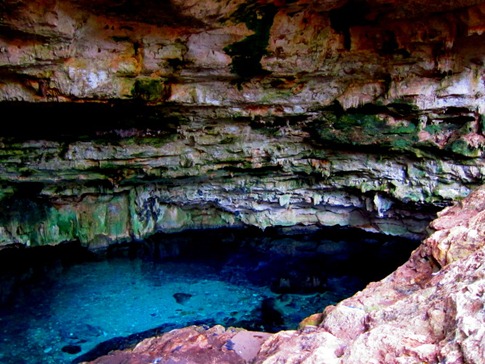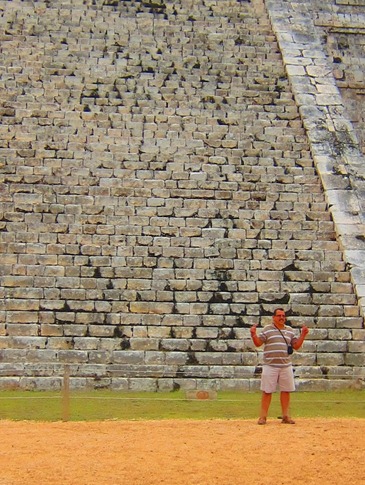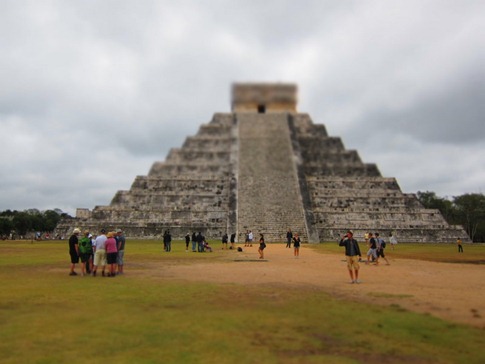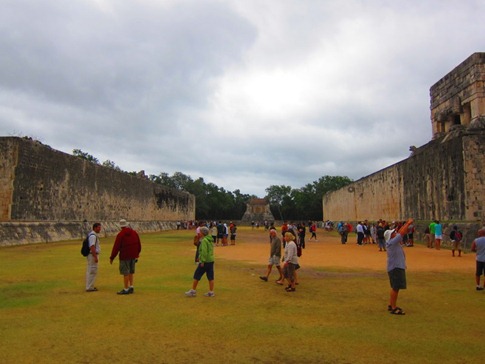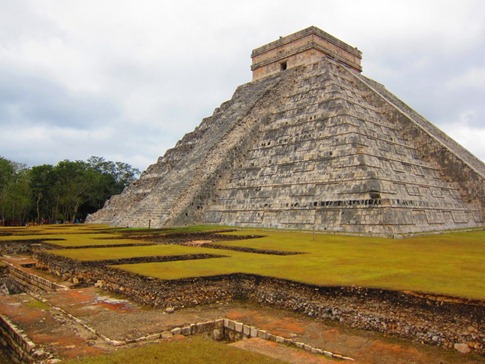What’s often referred to as the “Yucatan Peninsula,” the cootchy-coo of a finger sticking up into the Gulf of Mexico to tickle the US beneath Florida’s armpit, is actually made up of three Mexican states: Campeche, Yucatan and the marsupial-sounding Quintana Roo. The later is actually home to Cancun, Cozumel, and Playa del Carmen, some of the more well-known beach destinations in Mexico. All three are filled with ruins left behind after the decline of Mayan civilization about 1000 AD.
On the drive after a few nights of camping, one fun activity is watching the passenger crossing their eyes and spastically smashing their hands together like a haywire version of one of those monkeys with cymbals as they attempt to systematically rid the cabin of hitchhiking mosquitoes. And particularly after “the antcident” in Palenque, another is dealing with the black ants we seem to have had in the truck since Zipolite. Not like an infestation or anything; they just frequently appear, usually just one, walking casually across the dashboard. As a result, at any moment, the passenger may take the Lonely Planet book currently being used for reference and, seemingly out of nowhere, slam it down ruthlessly in front of them looking around tauntingly. “Anyone else wanna be a hero?”
This was quite startling the first few times, but on most of the roads in the Yucatan, it really didn’t matter; They are typically long straightaways cut through the thick jungle between point A and point B.
Below is the entrance gate for Yucatan state.
And hidden in that jungle are a number of ruins dating back 2000 years that were part of a great Mayan occupation ranging from southern Mexico down into Belize, Guatemala, El Salvador and Honduras. After a night in the namesake capital of the state of Campeche (not really recommended), we followed some backroads to the Ruta Puuc and a few of the lesser-visited ruin sites. The most interesting to us were Sayil and Labna, their small size making it easier to imagine people living there.
Fertility idol…
At the end of the day, we found a great cabana for $30 behind a restaurant called “The Pickled Onion” in Santa Elena. The owner, Valerie, a Canadian but originally from the UK, had built the cabanas and added a pool for when her family came to visit but has since started renting them out. Simple mudbrick construction and thatched roofs but they were comfortable, clean and withstood a downpour that lasted all night. Granted, we were startled at one point by a good size rat who had also sought shelter under the thatch, but he was a “country rat” not a city sewer rat (you can usually tell by their pocket chain) so we all coexisted peacefully. Check out our Route page for specifics.
And Santa Elena provides a great base for exploring one of the larger ruin sites in the area, Uxmal (oosh-mal).
Intricate carvings on the facades of the buildings including one that we thought looked like a hand grenade.
The “basket” in the ball court.
Bats in one of the cracks…
They say there are no above ground rivers in the Yucatan, the water instead flowing through complex underground cave systems. When those caves open to the surface, they are called “cenotes.” We saw a small sign for a cenote off the main road and followed a faint track about 2 km, asking a local kid and his girlfriend along the way if we were heading the right direction. When we found it, the couple’s friends were already there and had just enjoyed a cool swim in the clear water at the bottom of a cave that seemed to appear out of nowhere.
The final ruin of the day was kinda just that. While Chichen Itza is a large and impressive site, its proximity to the beach resorts and cruise ports on the Caribbean make it very crowded. And I have to admit that I’d been a member of this crowd about 25 years ago, having been bussed in from a cruise ship docked in Cancun. But having seen equally impressive sites without crowds at Mont Alban, Palenque and Uxmal, the ever present stream of bright-colored tourists ruining every picture and the constant hawking of the vendors looking for suckers literally “just off the boat” was a downer.
Riddle me this: What has two thumbs and is thoroughly enjoying his cultural shore excursion?
THIS GUY!
Though I did manage a improve my mood after a guy selling huge velvet sombreros covered with silver tassels yelled “Senor, sombrero?”
“No gracias,” I said.
He wouldn’t give up and gestured to Ann. “Come on! For your girlfriend?”
Ignoring for the moment his implication that I looked like a guy who would get off on chicks wearing oversized velvet sombreros, I turned to him and said “Ella es mi esposa. Me novia no viene,” which, forgiving a minor tense error in my Spanish, translates to “She’s my wife. My girlfriend didn’t come.” He seemed to enjoy that.

